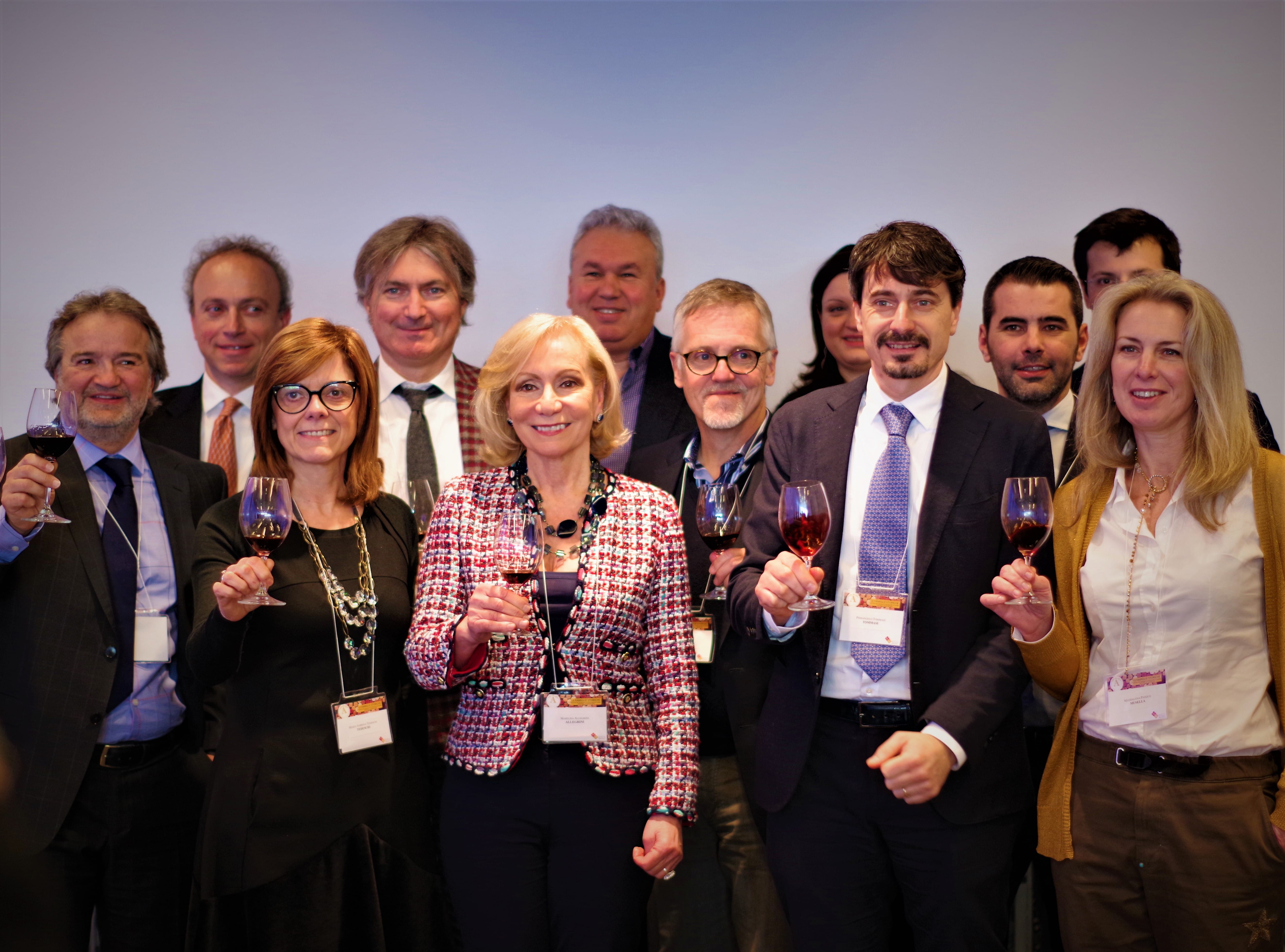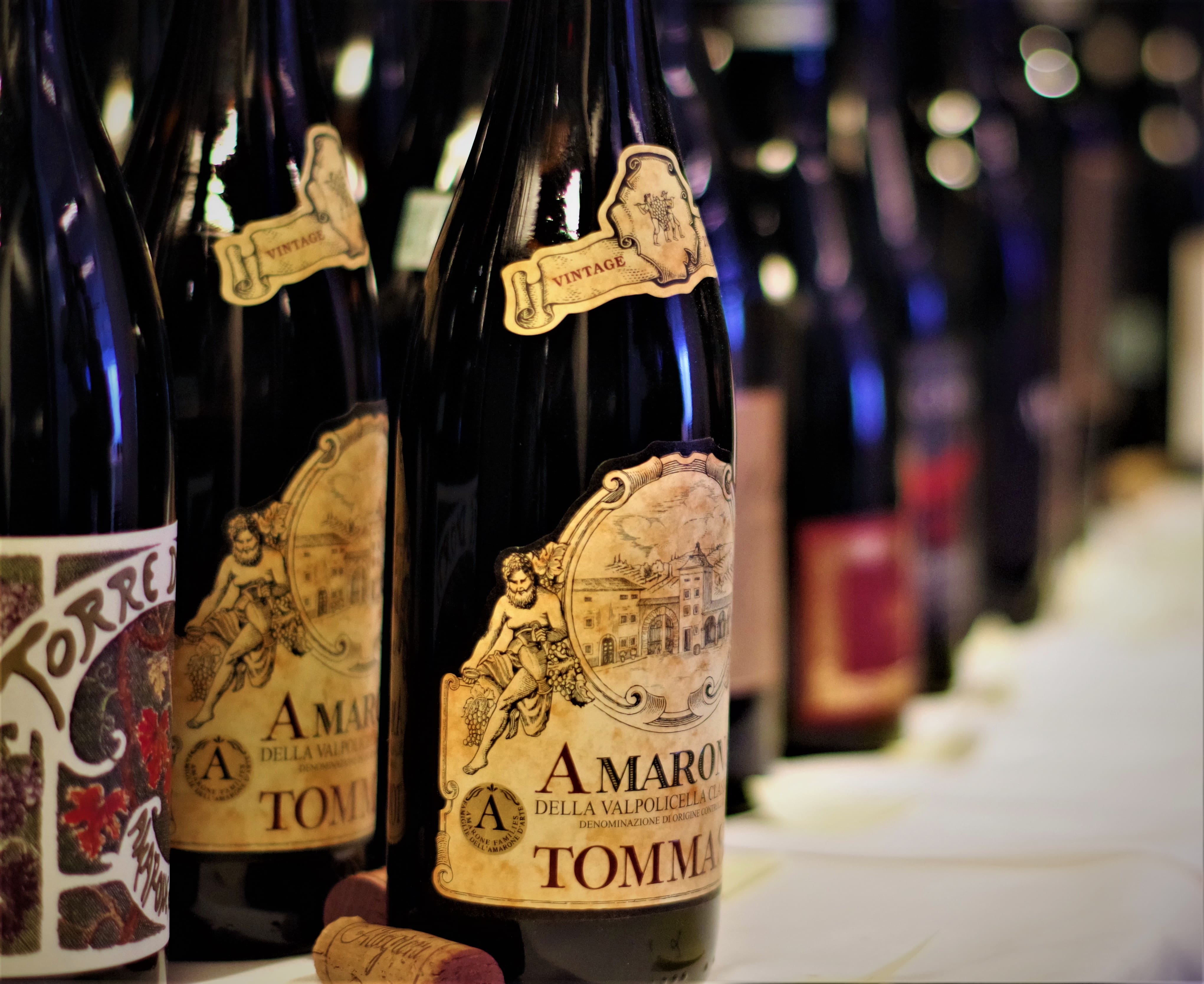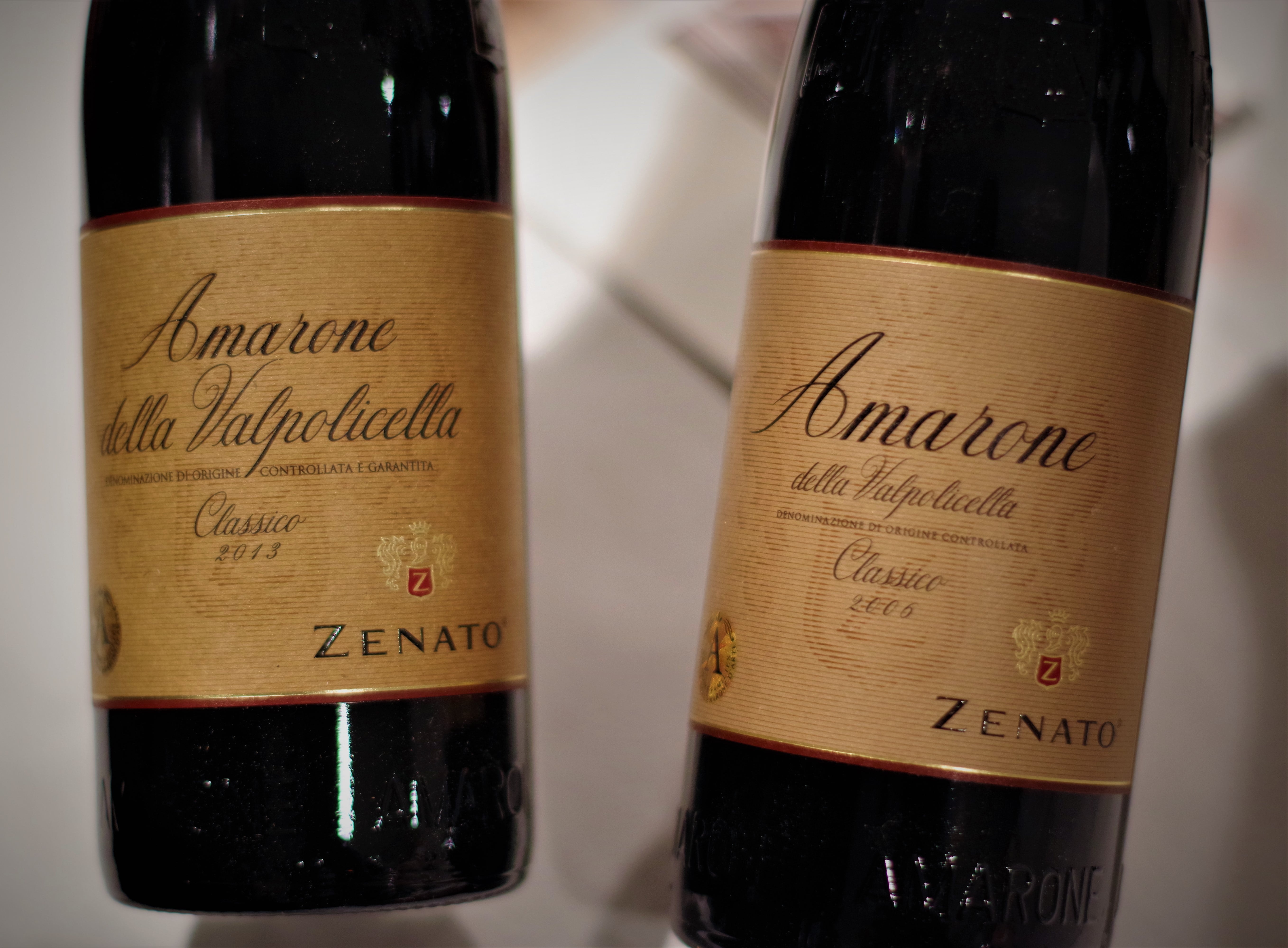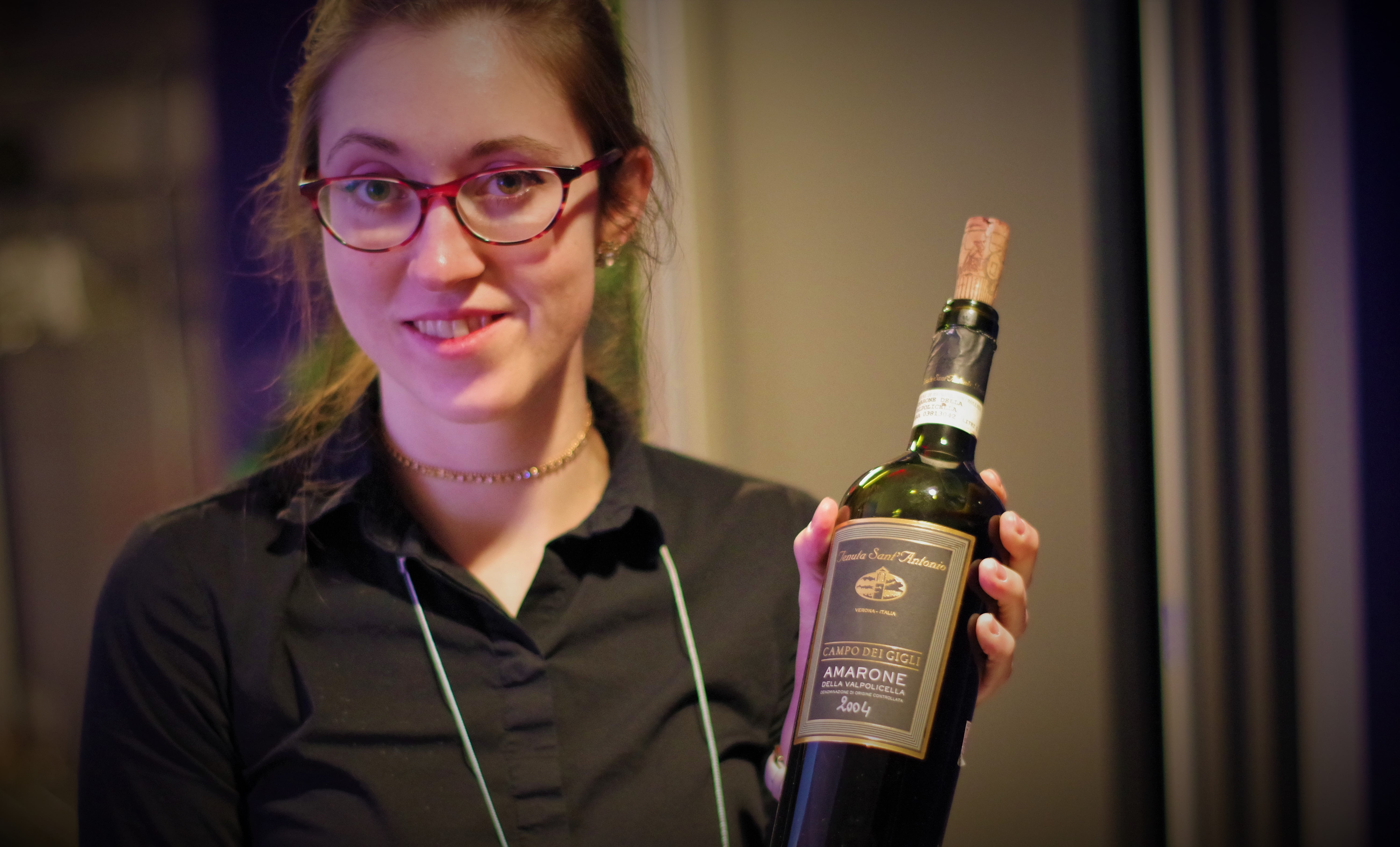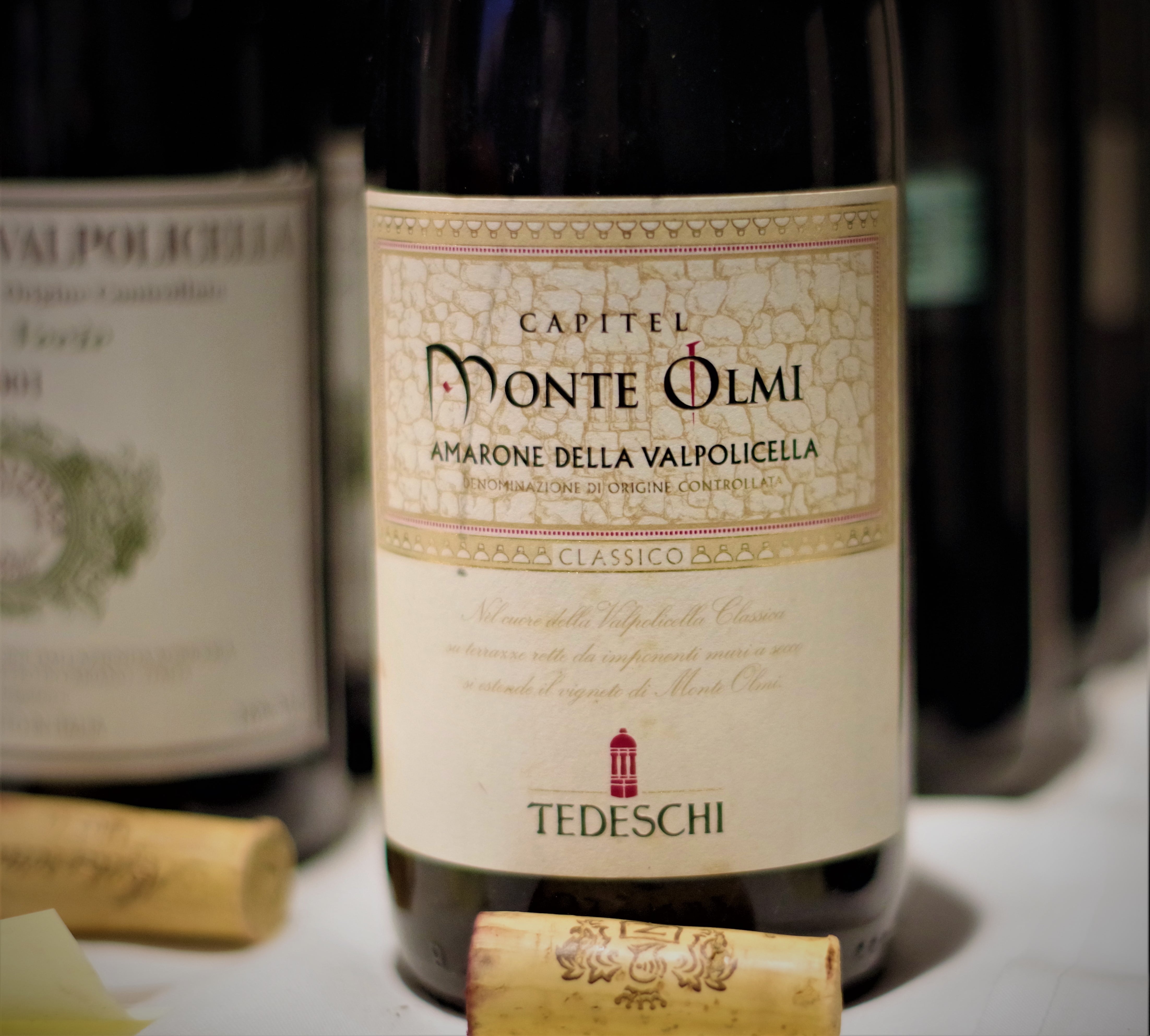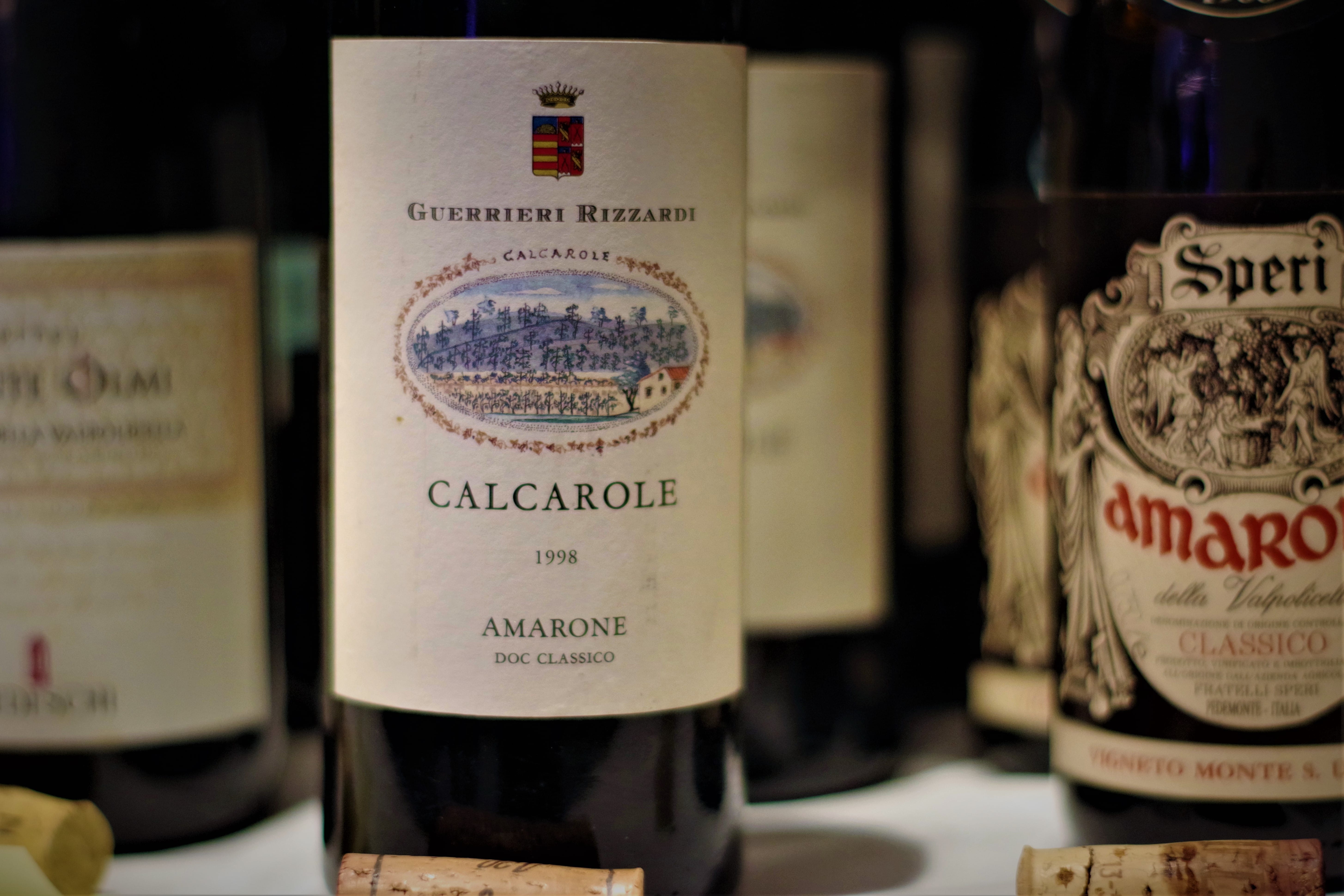It’s the 50th anniversary of the valpolicella DOC and to celebrate, the association of historical families, Famiglie Storiche, which combines 13 top estates, have organised an amazing tastings of historical vintages of Amarone and other great wines of the region. The association, in fact, was founded in 2009 and at the beginning gathered ten members. The idea of these ​​Families, is to make explicit a heritage of historicity, craftsmanship and overall quality production. Among themselves, they have instituted stricter restrictions compared to usual Amarone della Valpolicella  DOCG rules such as more precise grape selection, higher minimum alcohol level (15%abv) and a longer minimum ageing of 30 months instead of 24 months. The tasting took place at the Institut de Tourisme et d’Hôtellerie du Québec, with vintages from 2010 to 1988 and the Masterclass was be animated by the famous Jacques Orhon and a representant of each of the Valpolicella houses.
There’s been such ruckus over the time between Famiglie Storiche and the Consorzio di Tutela del Valpolicella. First of all, concerning the original name of the association, the Families of the Amarone d’Arte were forced to remove from the company name full or partial reference to the Amarone della Valpolicella DOCG, including the word Amarone. Furthermore, for the ninth year in a row, the Consorzio Tutela Vini Valpolicella decided to reduce the percentage of the grapes to be put to rest without any qualitative motivation. Only up to 65% of the grapes may be used for the production of Amarone without taking into account specific location or vineyards that may be more suited.
C’est le 50e anniversaire de l’appellation Valpolicella et pour célébrer, l’association des familles historiques, Famiglie Storiche, qui regroupe 13 domaines, a organisé une dégustation de plusieurs millésimes d’Amarone et d’autres grands vins de la région. L’association, en effet, a été fondée en 2009 et réunissait seulement dix membres. L’idée de ces Familles, est de rendre explicite un héritage d’historicité, d’artisanat et une production de qualité. Entre eux, ils ont institué des restrictions plus strictes par rapport aux règles habituelles de la DOCG Amarone della Valpolicella  telles que la sélection plus précise des raisins, un taux d’alcool minimum plus élevé (15% abv) et un vieillissement minimum plus long de 30 mois au lieu de 24 mois. La dégustation a eu lieu à l’Institut de Tourisme et d’Hôtellerie du Québec, avec des millésimes de 2010 à 1988 et la Masterclass a été animée par le célèbre Jacques Orhon ainsi qu’ un représentant de chacune des maisons de Valpolicella.
Il y a eu tant de remous entre Famiglie Storiche et le Consorzio di Tutela del Valpolicella. Tout d’abord, concernant le nom original de l’association, Famiglie dell’Amarone d’Arte ont été obligées de retirer de leur nom, la référence complète ou partielle à l’Amarone della Valpolicella DOCG, y compris le mot Amarone. En outre, pour la neuvième année consécutive, le Consorzio Tutela Vini Valpolicella a décidé de réduire le pourcentage de raisins à mettre au repos sans aucune motivation qualitative. Seulement jusqu’à 65% des raisins peuvent être utilisés pour la production d’Amarone sans tenir compte de l’emplacement spécifique ou des vignobles qui pourraient être plus adaptés.
Torre d’Orti – Torre D’orti is located in between different terroir, red earth, typical of the Valpolicella Classica, leaves room for the white, calcareous rock. It’s a strong, explosive wine with a very defined structure.
Torre d’Orti est situé entre différents terroirs, la terre rouge, typique de la Valpolicella Classico, laisse place à la roche calcaire blanche. C’est un vin fort, explosif avec une structure très définie.
Tommasi – At Tommasi, the 2009 vintage marked the 50th anniversary of the estate. In addition to the historic vineyards, cultivated with the traditional pergola, the family was among the first forerunners in Valpolicella in the introduction of high density plant guyot, in order to lower yields to have excellent quality of the grapes. It has been very present on the north American market known as seductive and elegant wine, easy to like with an unmistakable style.
À Tommasi, le millésime 2009 a marqué le 50e anniversaire du domaine. En plus des vignobles historiques, cultivés avec la traditionnelle pergola, la famille a été parmi les premiers précurseurs de l’introduction du guyot à haute densité, afin d’abaisser les rendements pour avoir une excellente qualité des raisins. Ce vin a été très présent sur le marché nord-américain connu en tant que vin séduisant et élégant, facile à aimer avec un style incomparable.
Masi – For over 200 years, the Boscainis have been producers and winemakers in the Veneto, Skilled in the production of Amarone & Recioto. The name Masi comes from “Vaio dei Masi,†the little valley purchased by the Boscaini family in the late 18th Century.
Depuis plus de 200 ans, les Boscainis sont producteurs et viticulteurs en Vénétie, qualifiés dans la production d’Amarone & Recioto. Le nom Masi vient de “Vaio dei Masi”, la petite vallée achetée par la famille Boscaini à la fin du 18ème siècle.
Zenato – The passion and interest for native vines have brought back oseleta and croatina in the valpolicella blends including those of Zenato. The estate is based in a territory that surrounds Lake Garda. The amarone della valpolicella classico 2006 is brick colored, vibrant, and well-structured. It’s ripe with fortified-like notes that are quite interesting.
La passion et l’intérêt pour les vignes indigènes ont ramené l’oseleta et le croatina dans les assemblages en valpolicella dont ceux de Zenato. Le domaine est situé dans un territoire qui entoure le lac de Garde. L’amarone della valpolicella classico 2006 est de couleur brique, vibrante et bien structurée. Il est mûr avec des notes fortifiées qui sont assez intéressantes.
Musella – Situated within a natural park, full of rare plant species where many animal species live free, it made sense for a small vineyard like musella to adhere to biodynamics standards.
Situé dans un parc naturel, plein d’espèces végétales rares où de nombreuses espèces animales vivent libres, il était logique pour un petit vignoble comme musella d’adhérer aux normes biodynamiques.
Begali – This small family-run winery was founded at the end of the Second World War. The family vineyards are mainly located in three vineyards: Monte Ca ‘Bianca, La Cengia, named after the rocks that dot the hill near the village and Masua. It is 12 hectares scattered between the hill and the foothills in the heart of the classic Valpolicella, all pergola.
Cette petite cave familiale a été fondée à la fin de la Seconde Guerre mondiale. Les vignobles de la famille sont principalement séparés en trois: Monte Ca ‘Bianca, La Cengia, nommé d’après les roches qui parsèment la colline près du village et Masua. C’est, en tout, 12 hectares dispersés entre la colline et les contreforts au coeur du Valpolicella classico, tous en pergola.
Allegrini – The Allegrini Family has been producing wine for over four hundred years. Owner Marilisa Allegrini is a global ambassador for the region and is internationally considered the “voice of Amarone.â€
La famille Allegrini produit du vin depuis plus de quatre cents ans. La propriétaire Marilisa Allegrini est une ambassadrice mondiale pour la région et est internationalement considéré comme la «voix d’Amarone».
Venturini – In the heart of the Valpolicella Classico the Venturini family owns about 15 hectares of vineyards planted with pergola in the hills and with a guyot in the foothills area. One of its main commitments is to protect the territory that is also expressed in the maintenance and restoration of the “marogna”, stone walls that create the typical terraces of Valpolicella.
Au coeur de la Valpolicella Classico, la famille Venturini possède environ 15 hectares de vignobles plantés en pergola dans les collines et en guyot dans la région des contreforts. Un de ses principaux engagements est de protéger le territoire qui s’exprime également dans l’entretien et la restauration des “marogne”, murs de pierre qui créent les terrasses typiques de Valpolicella.
Tenuta sant’Antonio – Inheritors of their father’s 20 hectare estate in the eastern part of the Valpolicella zone, the four Castagnedi Brothers (Tiziano, Armando, Paolo & Massimo) acquired another 30 hectares in 1989. This spurred the birth of Tenuta Sant’Antonio in 1995. Campo dei Gigli, the oldest vineyard is dedicated to the lily, the flower that symbolises Tenuta Sant’Antonio. A single vine grows in that vineyard, giving a unique wine.
Héritiers du domaine de 20 hectares de leur père dans la partie orientale de la zone de Valpolicella, les quatre frères Castagnedi (Tiziano, Armando, Paolo et Massimo) ont acquis 30 autres hectares en 1989, ce qui a donné naissance à Tenuta Sant’Antonio en 1995. Campo dei Gigli, le plus ancien vignoble est dédié au lis, la fleur qui symbolise Tenuta Sant’Antonio. Une seule vigne pousse dans ce vignoble, donnant un vin unique.
Brigaldara – Brigaldara winery is a small, but noteworthy winery in the Valpolicella region. The name Brigaldara hails from the 13th century, referring to a group of farmhouses, the villa, and the surrounding countryside. The Cesari family purchased the property in 1929. The Case Vecie is a more recent acquisition of the Cesari family.
Brigaldara est un petit mais remarquable établissement vinicole dans la région de Valpolicella. Le nom Brigaldara est originaire du 13e siècle, se référant à un groupe de fermes, villas et la campagne environnante. La famille Cesari a acheté la propriété en 1929. Case Vecie est une acquisition plus récente de la famille Cesari.
Tedeschi – The viticultural technique of the Tedeschi family is based on tradition combined with research and modern technology. In recent years, in fact, the company has focused on the zoning and the characterization of the entire park of owned vineyards, all in a hilly and raised position in Corvina and Corvinone, with the presence also of Rondinella and Oseleta. A fundamental research that marks a real record in Valpolicella.
La technique viticole de la famille Tedeschi est basée sur la tradition combinée avec la recherche et la technologie moderne. Ces dernières années, en effet, l’entreprise s’est concentrée sur le zonage et la caractérisation de l’ensemble des vignobles de Corvina et de Corvinone, avec la présence de Rondinella et Oseleta. Une recherche fondamentale qui marque un véritable record en Valpolicella.
Guerrieri Rizzardi – Guerrieri Rizzardi’s historic winery, was founded in 1913 by the union of two noble Veronese families: the Counts Guerrieri, owners in Bardolino, and the Conti Rizzardi, in Valpolicella from 1649. Amarone Calcarole, comes from grapes grown on espalier vineyards on the homonymous hillside and ideally exposed to the southwest. The wine is produced only in the best years with limited quantity and numbered bottles.
La cave historique de Guerrieri Rizzardi, a été fondée en 1913 par l’union de deux nobles familles véronaises: les Comtes Guerrieri, propriétaires à Bardolino, et les Conti Rizzardi, à Valpolicella à partir de 1649. Amarone Calcarole, provient de raisins cultivés sur des vignobles d’espalier du même nom et idéalement exposée au sud-ouest. Le vin est produit uniquement dans les meilleures années avec des quantités limitées et des bouteilles numérotées.
Speri – The very traditional spieri, the history of the company began in the first half of 1800 and today the Speri family has reached the seventh generation. the grapes from each vineyard are vinified separately, giving life to the cru, such as the famous Amarone Classico Vigneto Monte Sant’Urbano.
Très traditionnelle, l’histoire de l’entreprise a commencé dans la première moitié de 1800 et aujourd’hui la famille Speri a atteint la septième génération. Les raisins de chaque vignoble sont vinifiés séparément, donnant vie au cru, comme le célèbre Amarone Classico Vigneto Monte Sant’Urbano.
